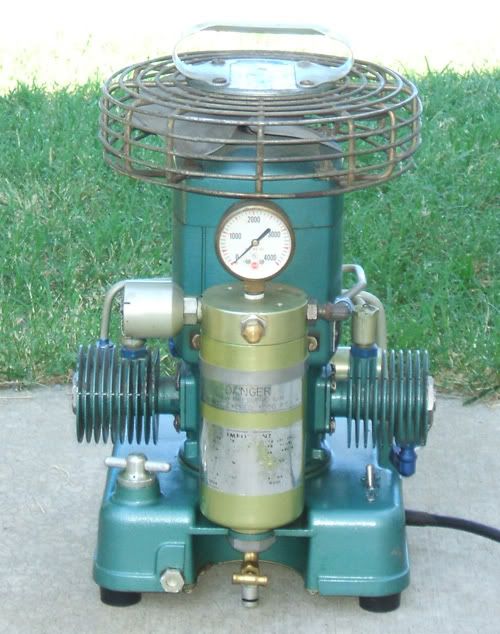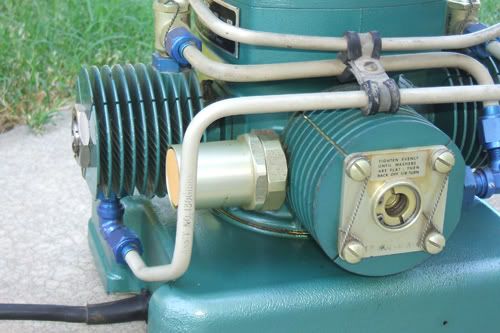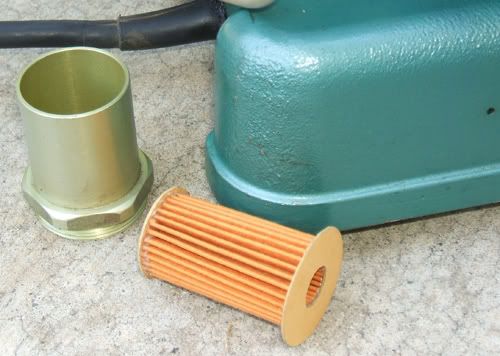O.K. Now I'm back home, and I hope this helps:
I'm surprised it's an aftermarket base considering the starting capacitor etc is mounted under the unit. It sure seems rather necessary to have it on there.
The Craigslist ad is now gone, but I remember seeing the 139R1500 mounted on a secondary base which had a secondary filter and fill whip attached. I'll try to break this all down step by step and define the terms I am using so we are on the same page.
This is what a stock 130R1500 looks like. The relay and capacitor are supposed to be self-contained within the base of this unit:
The canister on the front is the "filter and separator assembly" ("separator"). There should be no need to ever disassemble this as far as I know. At the bottom of this separator is a manual valve for draining condensation. I drain the separator after each fill.
The small, horizontal canister attached to the top, left of the separator is the "pressure relief valve". As you already know, the setting on that valve will determine your maximum fill pressure, not to exceed 3000 psi.
I was warned to keep the oil level to the top mark on the dip stick, and recommended to change the oil every 25 hours of use. If you don't use the compressor much, I would at least change the oil every three years or so even if the 25 hour threshold has not been met.
On the left, back side of the compressor unit is this air prefilter. Other than oil changes and condensation draining it is the only part on the actual 130R1500 that needs regular servicing:
Here is the filter disassembled:
As far as I know, the cartridge has been unavailable for some time. From what I deciphered from the filter that was on mine when I got it, the filter was a Purolator Products Inc., AN 6237-1, PP INC 30J82-1 (?) or 30382-1 ("0" could also be a "Q").
I only change my prefilter as needed, and make my own from a readily available (I think) WIX fuel filter. If you have to make your own, this is how I made mine (sorry, no assembly pictures yet, but the prefilter in the photo above is one of my modified fuel filters as described below):
1) Use WIX 33264 (fuel filter)
2) Use razor blade to cut straight across the filter paper where one of the metal end caps is attached. Use snips to cut the metal paper clip.
3) Cut from heavy card stock (backing on a pad of paper) a 1 1/8" disc (Use 1 1/8" template and cut inside the line).
4) Hot glue end of filter to disc.
5) Cut the other metal filter end cap off as before, and cut the paper clip as before.
6) Cut another heavy card disc at 1 3/8" (Use 1 3/8" template and cut inside the line) with a 1/2" hole in the center.
7) Hot glue the open end of the filter to the second disc.






